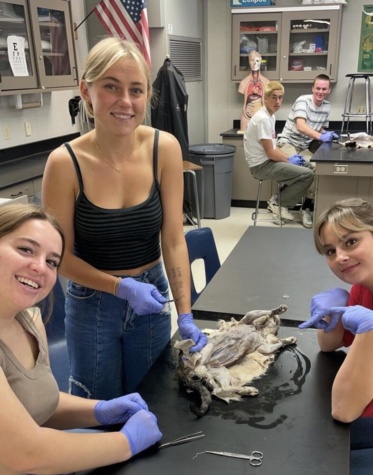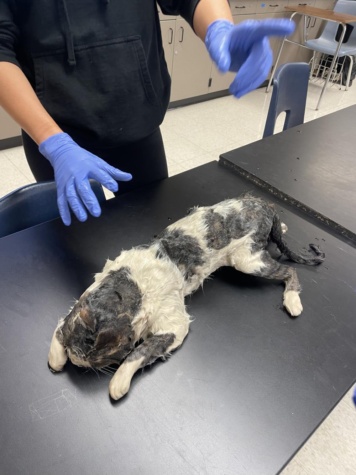
Avery Kearl | Writer
March 10, 2023
Animal dissection is a controversial practice that has been a part of medical education for centuries. It is a process of dissecting animals to study their anatomy and physiology in order to better understand human anatomy. However, the ethical implications of this practice have been debated for decades and is now relevant for students at San Clemente High School as the current anatomy course is dissecting cats this semester.
One of the main concerns surrounding animal dissection is where the animals are provided from. Many animals used in dissection are bred specifically for the purpose of dissection or are taken from the wild according to the American Anti-Vivisection Society. This raises questions about the ethics of using animals solely for human education and whether or not it is morally justifiable to take animals from their natural habitats as they are treated inhumanely during transportation and preparation for dissection.

Despite the ethical concerns surrounding animal dissection, it has been a common practice for medical students
since the 1500s. Belgian doctor Andreas Vesalius was the first to use animal dissection as a method of studying anatomy and published his findings in his book “De humani corporis fabrica.”
It’s important to consider that there are both pros and cons to using animal dissection as part of the anatomy curriculum at San Clemente High. On one hand, animal dissection can be a valuable tool for students to learn about anatomy and physiology firsthand. It allows students to study the body in a way that cannot be exactly replicated through textbooks or computer simulations.
Junior, Kaeli Kho, reveals, “I feel like we’ve learned so much from actually dissecting a cat rather than doing online simulations or models. It’s very hands on so it basically forces you to learn.”
On the other hand, there are alternative methods such as computer simulations, models, and textbooks. These alternatives can’t provide students with the same experience but there are no ethical concerns. Additionally, these alternatives may be more cost-effective and efficient than animal dissection.
Junior, Ava Striley confides, “What I’m learning from this dissection can be learned just the same from labs and textbooks and I’d feel better about it.”
The moral dilemma of animal dissection in high school science classes has ethical many implications. So even while animal dissection has been a common practice for centuries, it is important for students and educators to consider alternative methods of learning. While animal dissection allows students to receive a more advanced level of education, the inhumane treatment of the animals outweighs the educational benefits.

Leave a Reply